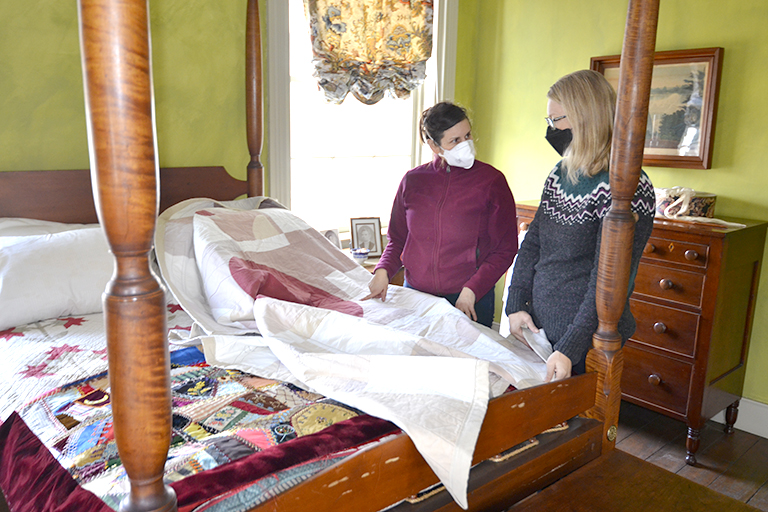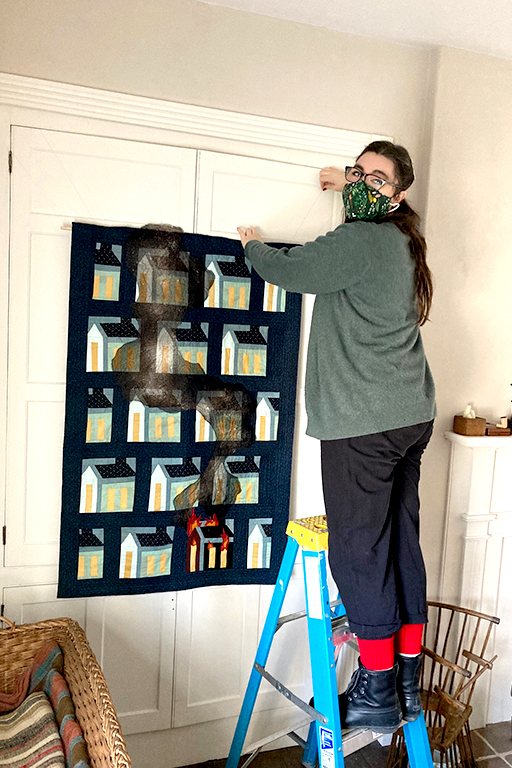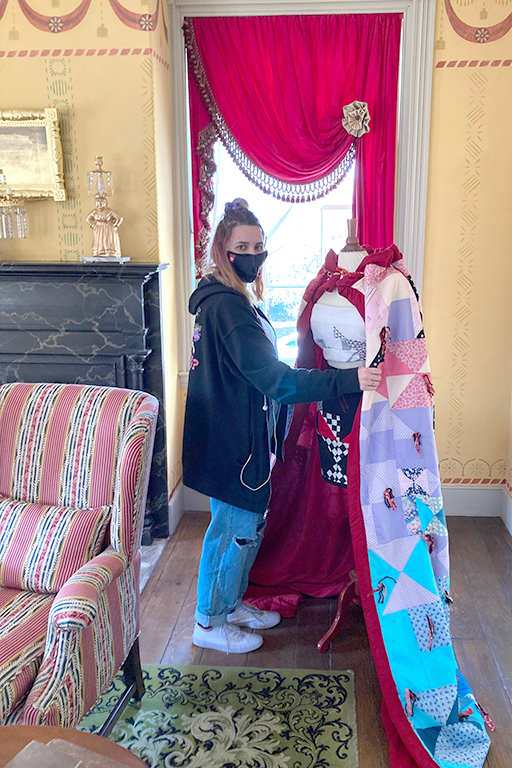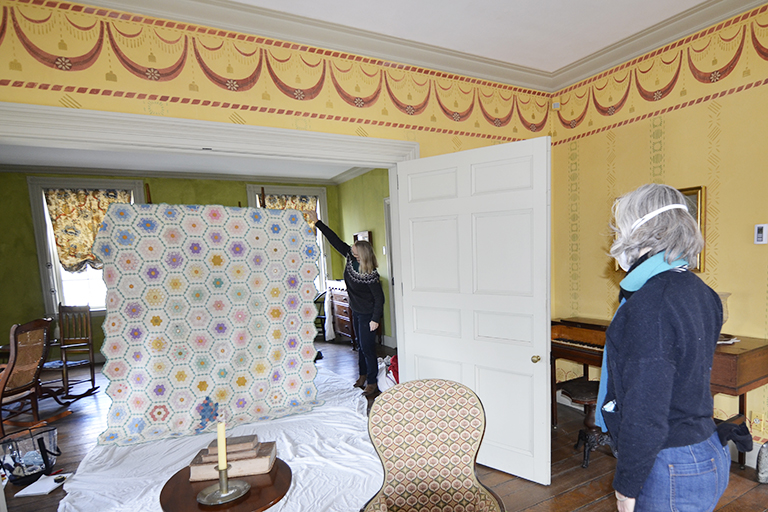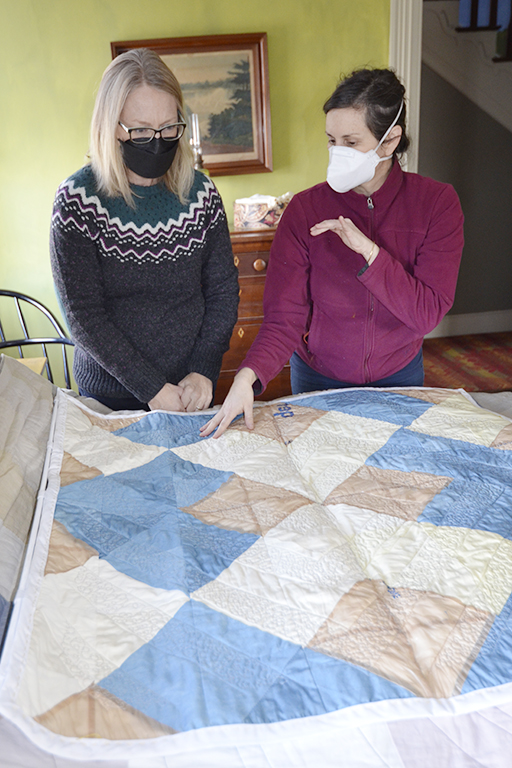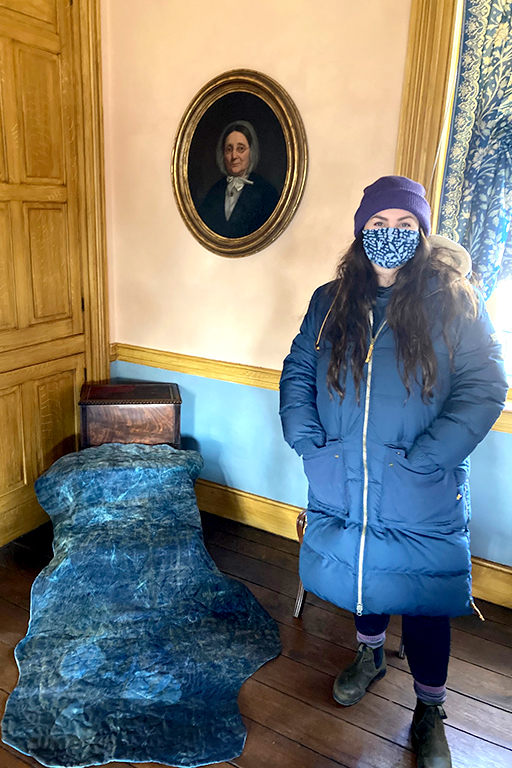Above, Wylie Director Carey Champion holds up A Conversation to allow student artist Angela Caldwell to see it fully extended from across the room. The early 1900s quilt is 75 x 75 inches of cotton broadcloth. Caldwell notes that to mend an item refers to the act of repair – which was the initial goal with this family quilt torn apart by a very exuberant golden retriever. Research in both fabric dying and quilting allowed for a new approach – to tackle filling the hole with something more, adding to the story of the quilt, and creating a conversation among the makers and the history.
The following quilts were also completed as part of the Fall 2021 Fibers S320/S420 Quilt and Dye Intensive. Many of them can be viewed by touring the various rooms of the Wylie House Museum during the spring 2022 exhibition period.
Quiet by Jack Boardman is an homage to painter Agnes Martin and a meditation on handwork, repetition, and the beauty in quiet. It explores the ways in which subtle shifts in color and tonality can create a quiet yet profound statement in their adjacency.Through the repetitive hand-stitching with gold thread and careful attention and arrangement of the muted color palette, the quilt hopes to highlight the divinity that’s to be found in deliberate, meticulous simplicity.
SUN by Emma Kershner is a quilt that built slowly. SUN’s only characteristics that stayed from the original sketch are the muted colors, size, and bold madder circle in the center. There are three layers to this quilt: the pieced together individual squares, the checkerboard they create, and the topographical stitching that lies on top. SUN is a meditation. All quilters know the time it takes to make a quilt. It leaves a lot of time for thinking.
Topographical Play by Mary Roberts is rooted in play and imagined spaces. Colors are soft and playful and bring an airy dream-like quality. The composition is a landscape, viewed from above in an airplane, much like a topographical map. Farmlands and sectioned-off land often look like quilts when viewed from the sky.
My Chapel by Thomas Emoff represents a space to lie comfortably with oneself. There’s no greater comfort than being in your own bed and along with that, there can be nothing more uncomfortable than being in a bed that you don’t enjoy. This quilt is meant to frame whoever lies within it and provide that space of comfort we all deserve. The comfort of being settled with one’s mind, body, and spirit, their own chapel.
Capybaras at the Waterhole #2, by Jenna Starkey is inspired by a MFA final thesis gallery show oil painting. The artist had minimal background experience in sewing, dyeing, or quilting but wanted to find a way to bring painting style into a quilt composition. Fabric patterns were collected that struck the same energy as color palettes and brushstrokes held in the painting of reference, Capybaras at the Waterhole, 2021, oil on canvas.
Progress, Not Perfection by Mary Grace Jackson represents the illusion of feeling stable as being “perfect.” The bottom portion of this quilt exhibits feelings of instability. Pieces of the fabric are distressed, torn, and tattered. Despite the chaos, fragility, and brokenness within these unstable places, they are still beautiful. They are worthy, loved, and supported. The safety pins create an imperfect path between the areas of stability and that of instability. We can look back and see the progress that we have made and how much closer we are to where we want to be than we have ever been before. We are never too far off from being one or the other.
